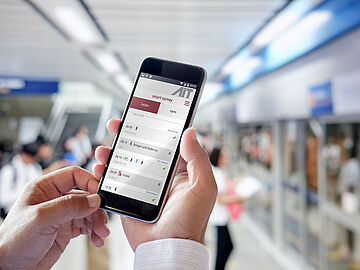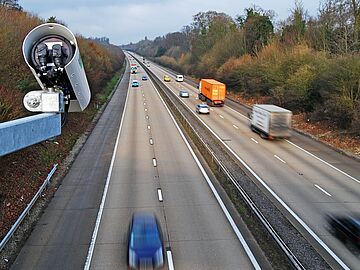Mobility of people is the result of a travel demand for activities such as working, shopping, education, sports etc. Digitalisation and the massive data it generates presents new opportunities to measure travel demand for transportation and retail infrastructures and services, diagnose problems and planning for the future. The AIT develops technically sound, computationally efficient and privacy-aware techniques for measuring travel demand from large scale sensor data.
Automatic collection and analysis of data about people’s mobility behaviour is important for
- preparing and assessing urban development and transport concepts such as new traffic links, traffic calming, planning and opening of shopping malls, office buildings, transit stations, smart cities etc.
- providing evidence for the success of transport policies (e.g. parking fees).
- quickly obtaining information on the practices and profiles of users of certain modes of travel and travel practices (car pooling, multi-modality, public bike systems, etc)
AIT develops novel techniques for exploiting big data resources such as sensor data of smartphones, communication signals between smartphones and cell towers and other data resources for obtaining timely and accurate travel demand estimations. Research topics include
- automatic and accurate reconstruction of intermodal trips, trip chains and trip purposes for travel diary generation, insurance policy design, e-Health applications, as well as persuasive technologies for rewarding modal shifts towards, based on robust pattern analysis of sensor data of smartphones carried by people
- inference of origin-destination matrices and their daily, weekly and seasonal variations, catchment area of infrastructures and locations, recurring activity patterns in geographical regions, and travel modes based on analysis of massive cell phone communication signal datasets (in close cooperation with telecommunication providers) and fusion with geo-spatial data sources
- inference of actual land use information from cell phone communication signal patterns
- summarization of multi-modal trip data
All travel demand estimation techniques are strictly compliant with the EU General Data Protection Regulation.


![[Translate to English:] ein Gehweg auf dem viele Fußgänger unterwegs sind, daneben ist ein Fahrradstreifen auf dem viele Radfahrer fahren. Daneben befindet sie eine Straße auf der Autos zu sehen sind.](/fileadmin/_processed_/b/9/csm_Capturing_Travel_Demand_c1cf76b65b.jpg)



